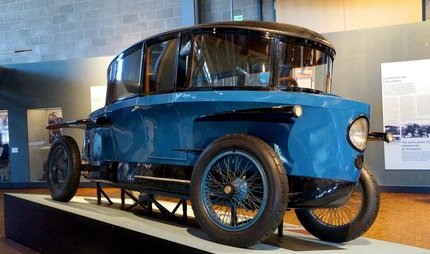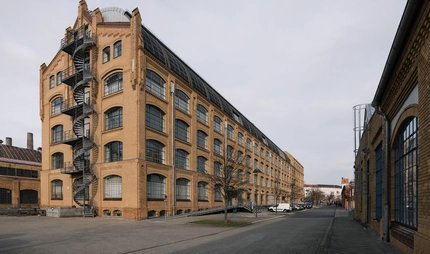
Fliegeberg
I believe I can fly
The dream of flying led Berlin’s Otto Lilienthal to become one of the greatest pioneers of aviation. Lilienthal built flying machines which enabled him to take to the air and fulfil his dream.
A hill for flying
Lilienthal experimented with his first flying machines on various hills around Berlin. Near his house in Lichterfelde, where his brother Gustav built ornate villas, he had an artificial hill built in 1894 from rubble. The hill was nearly 60 metres high and Lilienthal used it to test his gliders – performing over a thousand flights, managing distances of more than 80 metres.
The Fliegeberg today
When the park was redesigned between 1928 and 1933, the architects cut down the trees on the hill and created terraces leading up it. You can easily climb up the steps to the top of the hill and enjoy the sweeping view.
A round pillared hall on the top of the hill commemorates Otto Lilienthal’s dream of flying. The bronze globe inside is a replica, because the original one was melted down during the war.
Every year in the park, the Fliegefest is held in honour of Lilienthal and his pioneering deeds.
The grave at Lankwitz cemetery
Lilienthal crashed in 1896 during a test flight on the Gollenberg near Stölln and died from his serious injuries. His grave is at the cemetery in Lankwitz. The inscription “Sacrifices have to be made” was added to the grave in 1940. According to legend, these were Lilienthal’s last words, although eye-witnesses reported otherwise.
Lilienthal’s house among the villas of Lichterfelde West
While Otto was taking to the skies, his brother Gustav was busy building magnificent pseudo-mediaeval houses in the new villa district of Lichterfelde West. Otto Lilienthal’s house at Boothstraße 17 no longer exists. Take a stroll through the area past Tuscan mansions, great houses with pointed arches and ornamental bridges, and villas with gables and turrets. A good place to start your walk is Lichterfelde West S-Bahn station. When you pass the colourful Emisch-Haus with its painted religious motifs and the Tuscan-style Villa Holzhüter, you come to Kommandantenstraße with its imposing villas. On Weddigenweg and Paulinenstraße you can marvel at the Tudor-style houses with their drawbridges, merlons and towerlets.
Find out more about the city’s neighbourhoods with our Going Local Berlin app.















